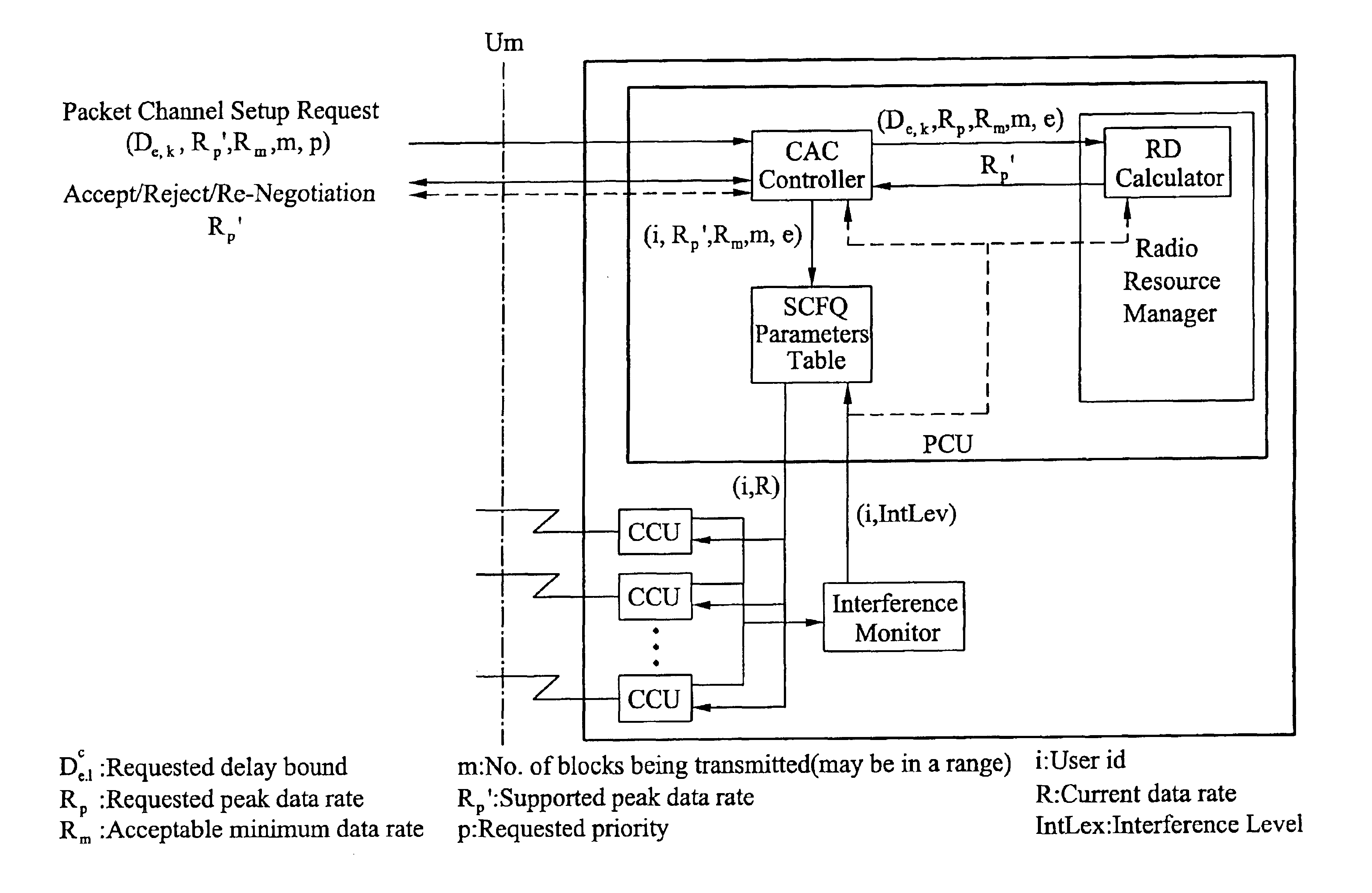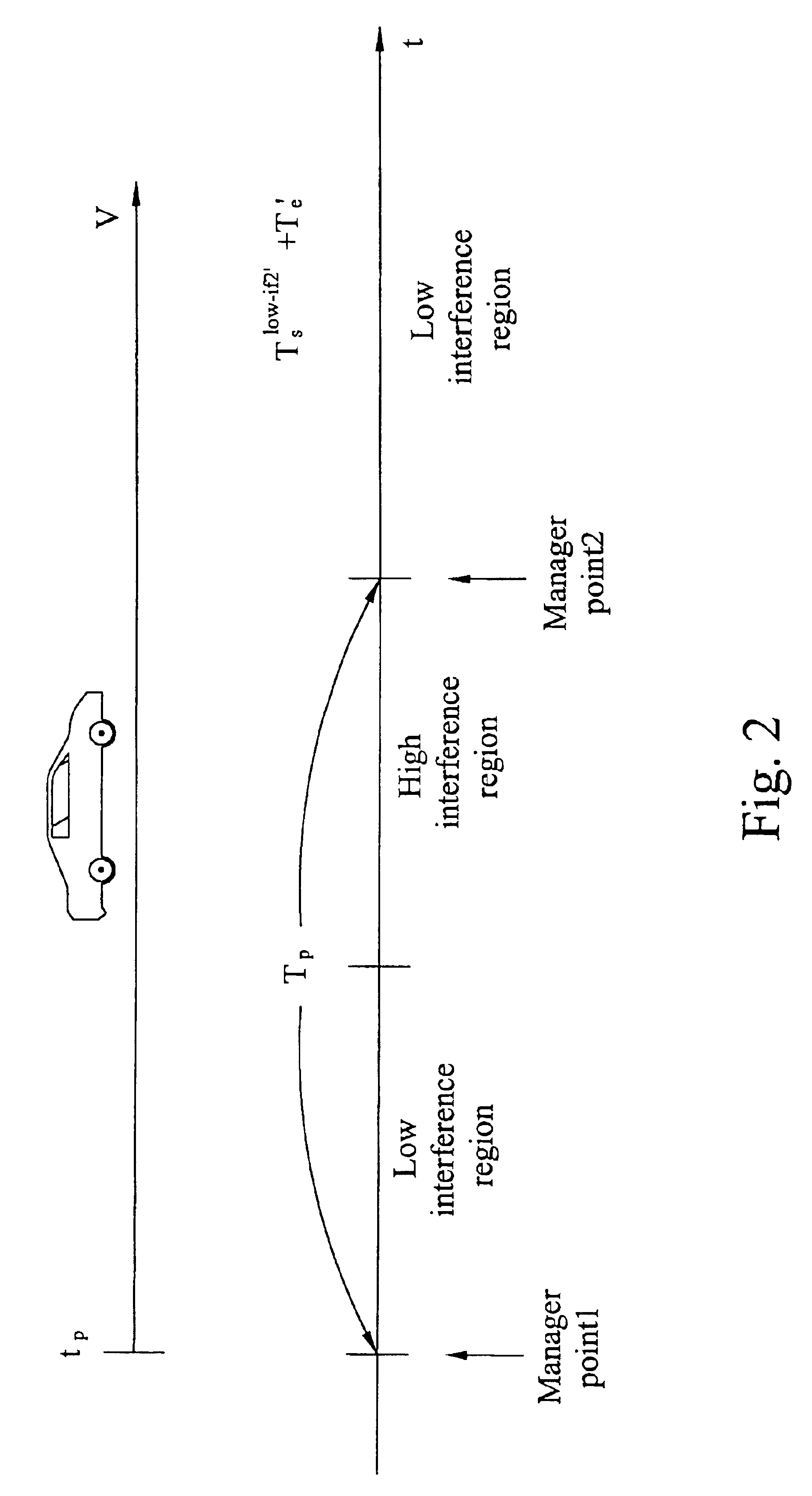Dynamic scheduling for packet data network
a packet data network and dynamic scheduling technology, applied in data switching networks, frequency-division multiplexes, instruments, etc., can solve the problems of long response time required for exchanging signals, traffic-scheduling algorithm difficult, and qos adjustment may not respond to interference changes, so as to achieve efficient bandwidth allocation and increase system capacity
- Summary
- Abstract
- Description
- Claims
- Application Information
AI Technical Summary
Benefits of technology
Problems solved by technology
Method used
Image
Examples
Embodiment Construction
[0029]The invention provides dynamic scheduling for Mobile Communication (DSMC) for scheduling different packet service requests in a TDMA system, especially in a General packet radio service (GPRS) system. The DSMC strategy is first explained as follows.
[DSMC Strategy Descriptions]
[0030]The concept of the present invention is to adjust the service rates for Mobile Stations (MSs) during the connection setup according to their QoS requirements and the interference levels. In GPRS, error data blocks will be retransmitted at the Radio Link Control (RLC) layer. Therefore, the number of retransmitted blocks can be reduced if we reduce the service rate of a connection when the MSs is within a high-interference region. The remaining bandwidth can be allocated to MSs located at a low-interference region to increase the bandwidth efficiency. As soon as the MS returns to a low-interference region, it will be assigned a higher service rate in order to resume the lost bandwidth. Considering the...
PUM
 Login to View More
Login to View More Abstract
Description
Claims
Application Information
 Login to View More
Login to View More - R&D
- Intellectual Property
- Life Sciences
- Materials
- Tech Scout
- Unparalleled Data Quality
- Higher Quality Content
- 60% Fewer Hallucinations
Browse by: Latest US Patents, China's latest patents, Technical Efficacy Thesaurus, Application Domain, Technology Topic, Popular Technical Reports.
© 2025 PatSnap. All rights reserved.Legal|Privacy policy|Modern Slavery Act Transparency Statement|Sitemap|About US| Contact US: help@patsnap.com



